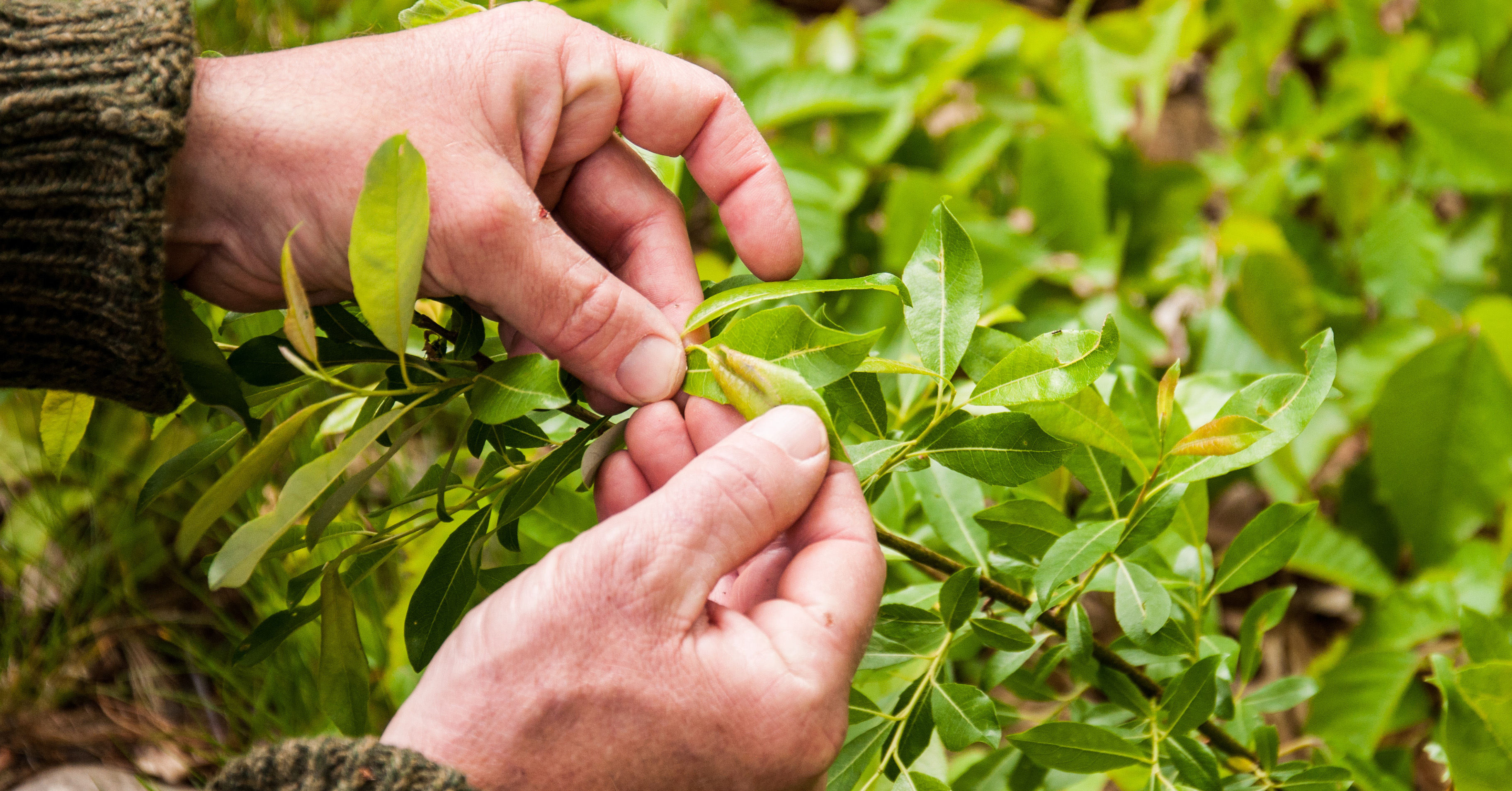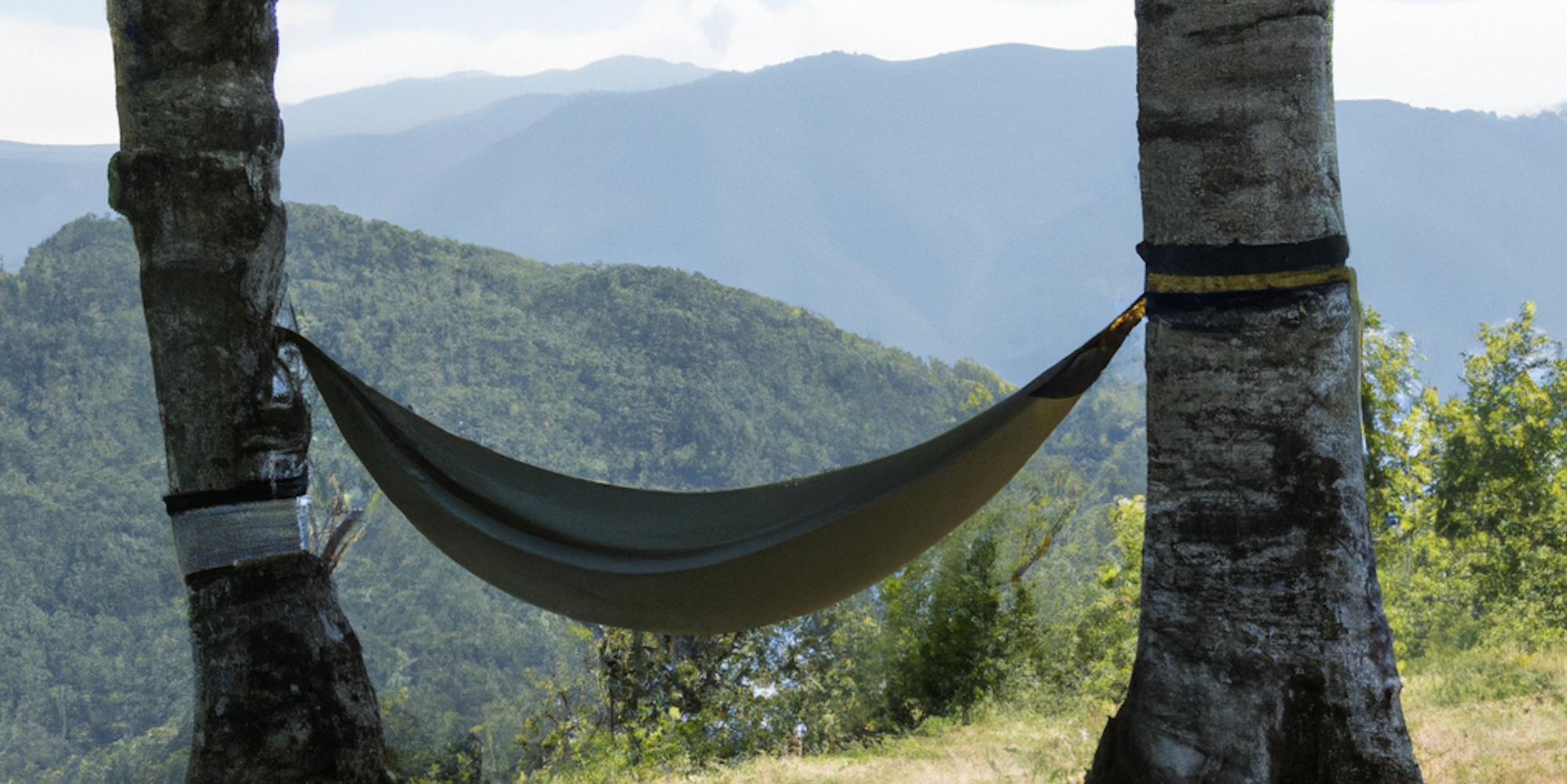Table of Contents

Best Trees for Mushroom Foraging
An expert mushroom hunter knows more than just how to differentiate between poisonous and edible mushrooms. They have an understanding of the ecological context in which prized mushrooms occur. They discern patterns in nature using the vegetation, soils, forest structure, topography and other physical features as clues.
Of all the clues a mushroom hunter use from nature, none is more important than knowing the dominant tree species that associate with prized mushrooms. This is because mushroom forming fungi often form ecological relationships with specific tree species. Whether your looking for Oyster Mushrooms decomposing the trunk of an Alder, or Chanterelles beneath the canopy of a Douglas Fir, knowing your trees is key.
Mushrooms form two types of ecological relationships with trees that make them important indicators of mushroom habitat.
Mycorrhizal Relationships Most plant species, around 95% of them, form symbiosis with fungi on their roots. These are known as Mycorrhizal Relationships. In this case fungi provide minerals and other key nutrients to plants via specialized structures in this root. In exchange for these nutrients fungi receive simple sugars produced through photosynthesis by the plants.What is less known is that only around 5% of plant species form mycorrhizal relationships with mushroom forming fungi. Most plants associate with mycorrhizal fungi that don’t actually produce mushroom fruiting bodies! Most mycorrhizal
Producer - Decomposer Relationships This is the more commonly understood mushroom life strategy. In this scenario, the fungi feed derive all their energy by decomposing organic substrates. These fungi often occur on dead branches or trunks, but can also grow within living trees. Large trees are often hollowed out by fungi and remain unharmed!
The Best Trees To Know For Mushroom Hunting
There are hundreds of tree species that are valued for their associations with gourmet edible and medicinal mushrooms. While this may seem overwhelming, the good thing is that you don’t need to remember or learn every single species in order to guide your search. All you need to learn are how to identify certain groups of related trees that occur within the biome your in. In general the best ecosystems in which mushrooms occur are temperate forests. In tropical climates mountainous forests often hold more choice edible mushrooms than low-land forests. Arid, alpine, and other extreme ecosystems may have an interesting diversity of fungi but they don’t often have the abundance or diversity mushroom hunters seek.
This guide is particularly catered for the diversity of plants and fungi that occur in North America. While this guide can be easily used in other parts of the northern hemisphere, the species mentioned are all native to North America.
1. The Oaks (Quercus)
Oak trees are highly regarded for their relationship with mushroom forming fungi in the northern hemisphere. There are over 300 different types of Oak trees, many of which tend to form particularly fruitful relationships with fungi. Oaks form mycorrhizal relationships with all sorts of delicious edible mushrooms such as Chanterelles, Boletes, Black Trumpets, Hedge Hogs, Cesars Amanitas, and much more. Decomposer mushrooms such as Turkey Tails, Reishi, Shiitake (or your local Lentinula) , Maitake, and Chicken Of The Woods are all known to grow on Oak. While searching beneath Oaks is generally a worth a shot during mushroom season some oaks are better than others.
Description: Oaks can be extremely diverse in their structure and leaf morphology. Many Oak species get large with age and form large branched canopies. Oaks can be evergreen or deciduous. Deciduous oaks often have soft, thin leaves that are lobed. Evergreen oaks typically have thicker and tougher leaves that are not lobed. If your uncertain about the identity of an Oak, search beneath it’s canopy for old acorns to confirm your suspicion.
Common Oak Species Of Mention
- Coast Live Oak (Quercus agrifolia)
- California Black Oak (Quercus kellogii)
- Red Oak (Quercus rubra)
- White Oak (Quercus alba)
- Southern Live Oak (Quercus virginiana)
- Interior Live Oak (Quercus wislizeni)
- Gambel Oak (Quercus gambelii)
2. Alders (Alnus)
Family: Betulaceae
Alders are fast growing and water loving trees that often are the first to appear after disturbances. They associate with nitrogen fixing bacteria, making them good competitors on deteriorated lands. While they’re mycorrhizal relationships aren’t as fruitful as other trees, they do associate with mycorrhizal mushrooms. Decomposers love them too. Alders are notorious substrates for Oyster mushrooms across their range.
Description:They are easily recognized by their white “rumpled” bark and serrated leaves shaped like a water drop. They make small cone-like structures that can often be found within the leafletted below.
Common Alder Species Of Mention
- Grey Alder (Alnus incanta)
- Red Alder (Alnus rubra)
- Smooth Alder (Alnus serrulata)
- White Alder (Alnus rhombifolia)
- Green Alder (Alnus alnubetula)
- Andean Alder (Alnus acuminata)
3. Pines (Pinus)
Family: Pinaceae Pines are notorious for associating with many choice edible mushrooms. While only certain species of fungi are able of breaking down the resinous woods, many different mushrooms form mycorrhizal relationships with pines. There are hundreds of different species of pines, each with their unique set of mycorrhizal partners.
Description: While many people use the term “pine” to describe many different types of coniferous trees, this is an error. Pines can be differentiated from other conifers by their relatively long needles that usually occur in bunches of 3 or 5.
Common Pine Species
- Eastern White Pine (Pinus strobus)
- Ponderosa Pine (Pinus ponderosa)
- Loblolly Pine (Pinus taede)
- Pitch Pine (Pinus rigida)
- Red Pine (Pinus resinosa)
- Lodgepole Pine (Pinus Contorta)
- Longleaf Pine (Pinus palustris)
- Virginia Pine (Pinus virginiana)
- Jeffery Pine (Pinus jeffreyi)
- Monterey Pine (Pinus radiata)
4. Quaking Aspen (Populus tremuliodes)
Family: Salicaceae
Aspens are common across mountainous parts of the United States and form unique mycorrhizal relationships. Most notably they associate with Leccinum insigne also known as “The Aspen Bolete”. This is a highly regarded edible although has bad fame for causing digestive issues in some. If you’ve got a sensitive gut, consider only eating a small piece at first.
Description: Quaking aspens have white powdery bark and grow in mono-dominant colonies. They are deciduous and display beautiful fall colors when temperatures start dropping.
5. Birch (Betula)
Family: Betulaceae
Birch occurs naturally and as ornamentals across the northern hemisphere. Like the Aspens they associate with several Leccinum species that are often go by the names of Birch Bolete. Birch also is host to the highly regarded medicinal mushroom Chaga. Chaga occurs naturally within the Birch forests of north eastern US and Canada as well as in northern Europe.
Description: Birch has smooth white bark that that is thin and readily peels from the trunk. They often occur near water and has soft serrated leaves.
Common Species Of Birch
- Paper Birch (Betula papyrilera)
- Yellow Birch (Betula alleghaniensis)
- River Birch (Betula nigra)
- Sweet Birch (Betula lenta)
6. Cottonwoods (Poplar)
Family: Salicaceae Cottonwoods are not typically considered a “choice” mushroom hunting tree but they do deserve some observation. While oysters and other wood loving species will grow on their decaying wood, you can find morels beneath them in the spring. These “flood plain” morels are mostly known from the pacific north west.
Description: Cottonwoods can be rather large trees always occuring on the side of streams and rivers. They form large trunks and have a spreading crown. It is named after its cotton like seeds.
Common Cottonwood Species
- Eastern Cottonwood (Populus delloides)
- Fremont Cottonwood (Populus fremontii)
- Black Cottonwood (Populus trichocarpa)
7. Spruce (Picea)
Family: Pinaceae Spruces are some of the most beautiful and valued trees for mushroom hunters. In the western United States, Sitka Spruce is favored by mushroom hunters while in the Rockies Blue Spruce is your best candidate.
Description: There are dozens of spruce species in North America and they may be difficult to differentiate from other conifers for beginners. They produce small leaflets of short needles similar to that of Firs. Unlike Fir, the needles are arranged in a whirled pattern.
Common Spruce Species
- Red Spruce (Picea rubens)
- White Spruce (Picea glauca)
- Blue Spruce (Picea pungens)
- Sitka Spruce (Picea sitchensis)
8. Firs (Abies)
Family: Pinaceae Firs are mostly high altitude conifers that form mycorrhizal relationships with many different types of fungi. Chanterelles, Boletes, and Cauliflower mushrooms are all known to associate with Fir. In the western United States “Hericium abietis”, a close relative of Lions Mane, grows on Fir.
Description: Firs are a coniferous tree with flat leaves composed of many needles that usually have a lighter colored underside. In the west coast the rule ¨Reds Roll, Whites Won´t¨ is a good rule to determine the species where their ranges overlap.
Common Abies Species
- Balsam Fir (Abies balsamea)
- White Fir (Abies concolor)
- Subalpine Fir (Abies lasiocarpa)
- Grand Fir (Abies grandis)
- Red Fir (Abies magnifica)
9. Douglas Fir (Pseudotsuga)
Family: Pinaceae Douglas Fir and it’s close relatives have a wide distribution across the western United States. It’s hardiness and quick growth have also made it a popular tree used for forestry across the world. Douglas Firs are notorious for forming mycorrhizal relationships with many different mushroom forming fungi.
Description: As the name entails, Douglas Fir resembles a Fir in leaf morphology and tree structure. The main difference can be seen in the cones, which has a long tail-like bract.
10. Madrones, Manzanitas, and Other Members Of The Blueberry Family
Family: Ericaceae The blueberry family has many different shrubs and trees that form mycorrhizal relationships. Madrones (Arbutus) are known to associate with a relatively valued Russula species. Manzanitas (Arctostaphylus) associate with a choice edible “Manzanita Bolete”.
Common Members Of The Blueberry Family
- Madrone (Arbutus sp.)
- Manzanitas (Arctostaphylus sp.)
- Huckleberries (Vaccinium sp.)
11. Elm (Ulmus)
Family: Ulmaceae
There are more than 30 different species of elms world wide and they mains occur in temperate areas. While they don’t associate with a particularly diverse group of mushrooms, morel hunters search for dying elms in the spring.
Description: Elms have rough bark with an umbrella like structure. Their leaves are oval and serrated. Drooping branches is a common feature of Elms.
12. Tan Oak (Notholithocarpus densiflorus)
Family: Fagaceae While not technically in the Oak genus this closely related species is worth a mention.. This It is known from the western United States and associates with species such as chanterelles, amanitas, boletes, and the highly sought after Matsutake mushroom, tricholoma magnivelare.
Description: Tan Oak is an evergreen hardwood with characteristics similar to Oaks. They usually grow tall and less branched than oaks. They form acorns and have tough woody leaves.
13. Apple Trees (Malus domestica)
Family: Rosaceae While apples are not highly regarded for mushrooms, they do form relationships with morels. In particular, old apple orchards in the spring are said to be the first hot spots for morels in the season.
Description: Apple trees are usually small with pale bark and small simple leaves. The margins of the leaves are smooth and lighter in color. They are most easily recognized by their fruits!
14. Cypress (Cupressus)
Family: Cupressaceae Unlike other coniferous trees cypress don’t usually associate with a wide range of mycorrhizal fungi. Instead the understory of cypress trees provide unique habitats for decomposer fungi such as Agaricus and Coprinus.
Description: Cypress is a coniferous tree with flat aromatic leaves. Unlike other conifers they don’t really form true needles. There structure is often cone shaped or lanky and branched.
Common Cypress Species
- Monterey Cypress (Cupressus macrocarpa)
- Arizona Cypress (Cupressus arizonica)
- Sargent’s Cypress (Cupressus sargentii)
15. Ash (Fraxinus)
Family: Oleaceae There are more than 25 species of Ash that occur mostly in northern temperate climates. Like other trees mentioned these trees are particularly valued for their associations with morels.
Description: These can be medium to large trees that usually have deciduous foliage. The leaves are usually pinnately compound and they are easily recognized by their helicopter like seeds.
16. Maple (Acer)
Family: Sapindaceae Maples don’t tend to associate with a grand diversity or abundance of mushroom species, but they do form some cool relationships. Dead maple wood can often become teeming with oysters and Lion’s Mane has been reported growing from living trees. Morels have also been found growing with Maple in the spring.
Description: Maples are most easily recognized for their large palmate deciduous leaves, such as those on the Canadian flag. They are usually branched in umbrella like structures and occur near water ways.
Common Maple Species
- Red Maple (Acer rubrum)
- Boxelder (Acer negundo)
- Sugar Maple (Acer saccharum)
- Bigleaf Maple (Acer macrophyllum)
17. American Beech (Fagus grandifolia)
Family: Fagaceae Beech is a deciduous tree that in North America is primarily distributed in the eastern forests. Like their close relatives the Oaks, they associate with a wide range of mycorrhizal fungi. Chanterelles, Boletes, and Truffles have all been known to grow in association with Beech.
Description: Beaches are deciduous trees that can grow large with a spreading canopy. They can often be recognized by the lower branches with a yellow colored bark.


